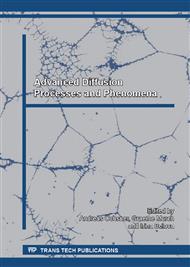p.73
p.79
p.85
p.93
p.101
p.109
p.121
p.129
p.145
Use of Cellular Automata for Modelling of the Material Erosion and Grit Entrainment during Discharge in EDM
Abstract:
A combined mathematical model has been presented to evaluate the main physical processes taking place in the electro-discharge machining (EDM) gap. The model consists of electric field distribution evaluation by using the full Poisson equation for the environment of different electrical parameters as well as the electric charge distribution, and rends particles (grits) movement in the gap forced by diffusion as well as the electric field drag of charged grits. Both models are developed on the same rectangular grid which allows mutual influence of them.
Info:
Periodical:
Pages:
101-108
Citation:
Online since:
June 2014
Authors:
Price:
Сopyright:
© 2014 Trans Tech Publications Ltd. All Rights Reserved
Share:
Citation:


